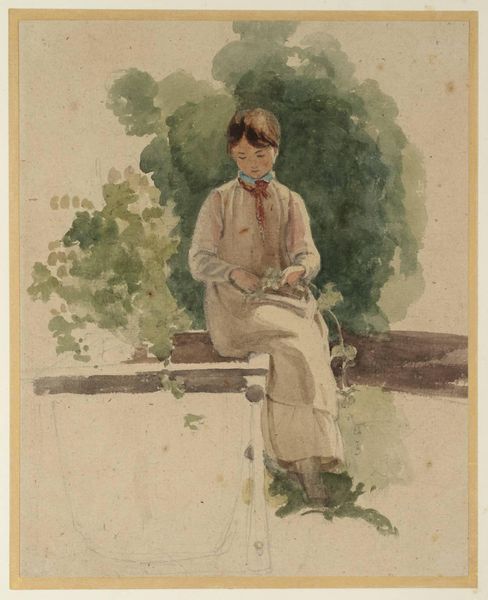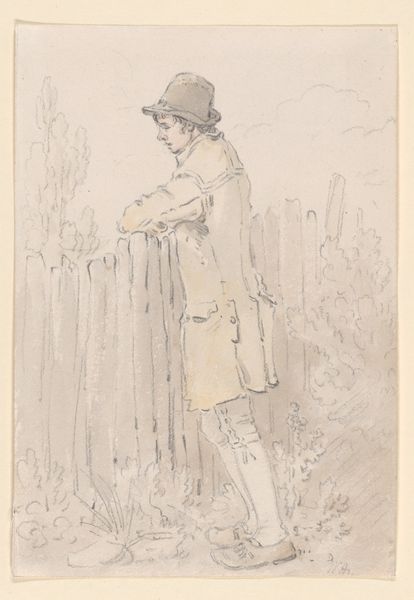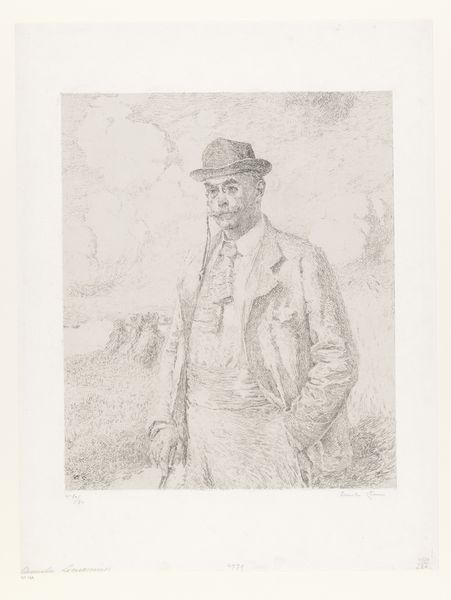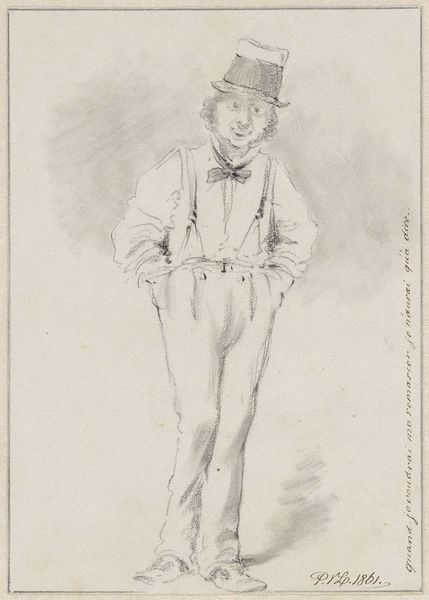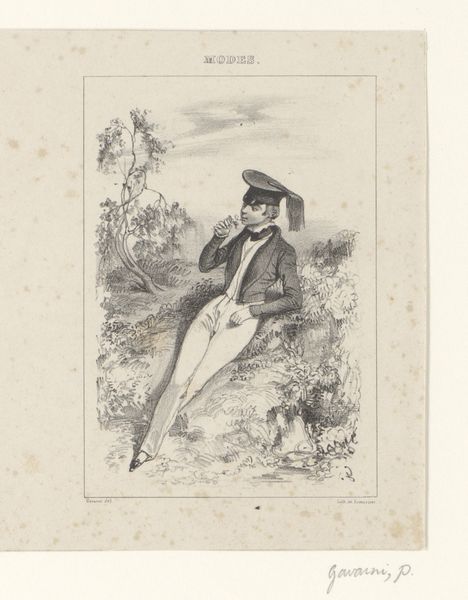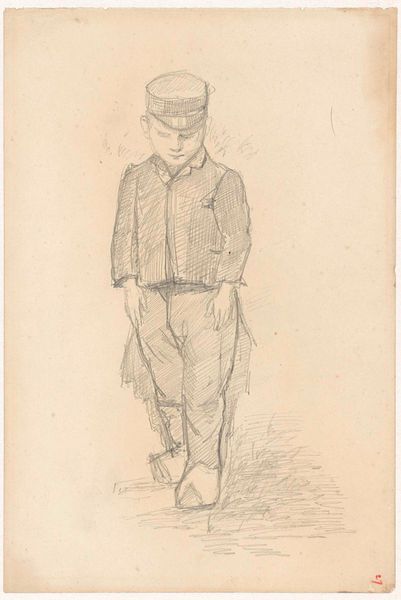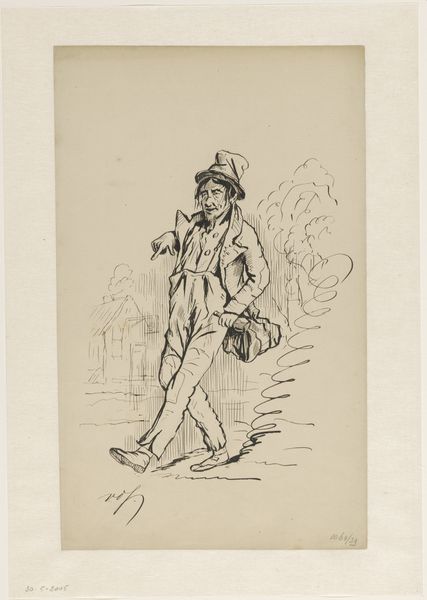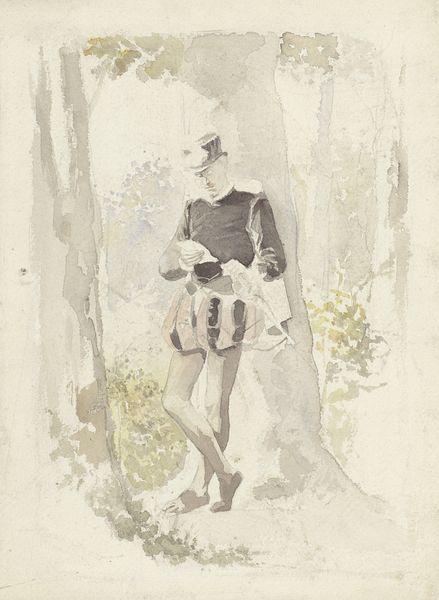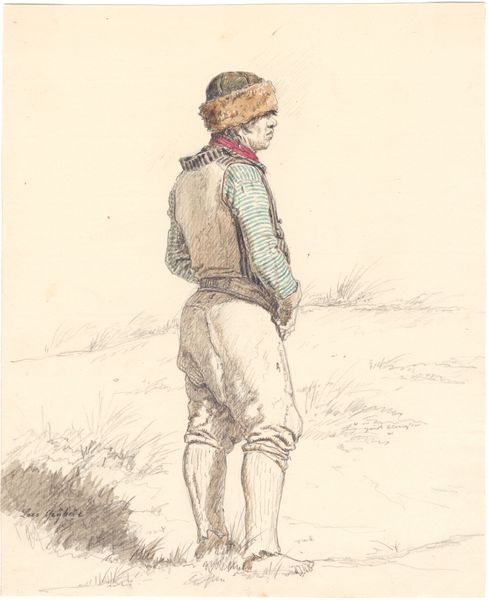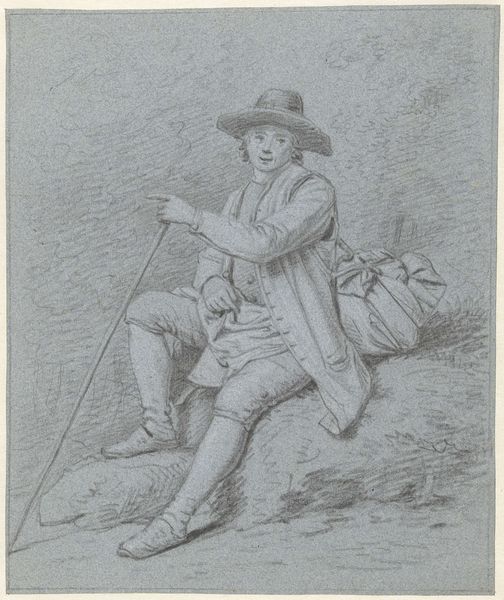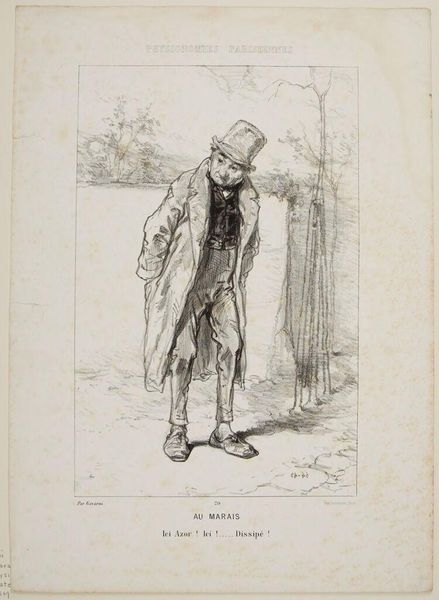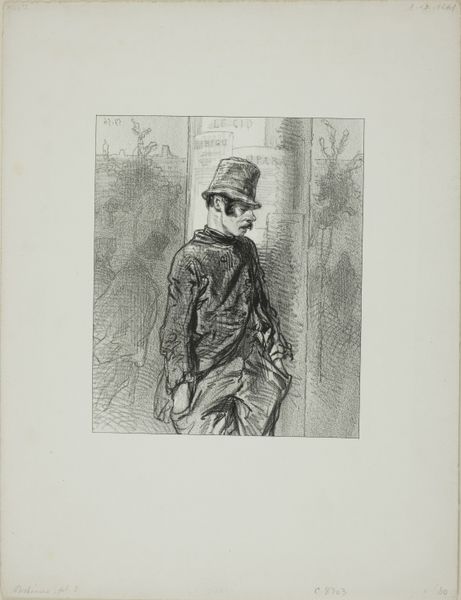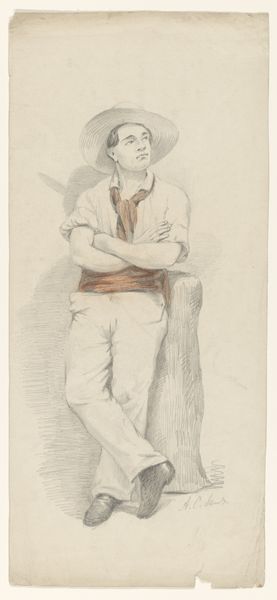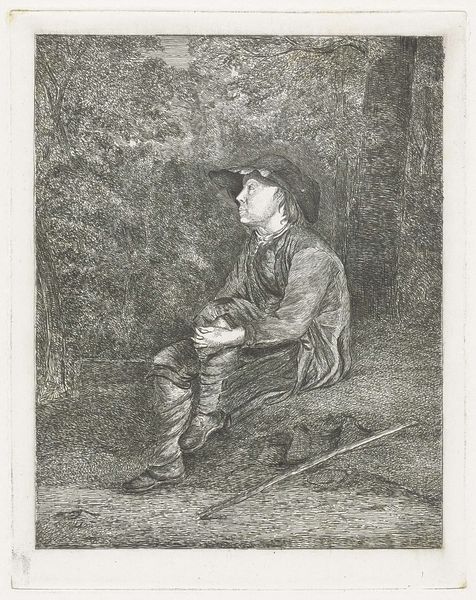
drawing
#
pencil drawn
#
drawing
#
amateur sketch
#
light pencil work
#
pencil sketch
#
charcoal drawing
#
portrait reference
#
pencil drawing
#
animal drawing portrait
#
portrait drawing
#
pencil work
Dimensions: framed: 27.94 × 22.86 cm (11 × 9 in.)
Copyright: National Gallery of Art: CC0 1.0
Editor: This is "A Young Boy Seated Beneath a Tree" from around 1790-1810, a pencil drawing by John Hoppner. It's interesting how Hoppner captures such detail with what appears to be a relatively quick sketch. What do you make of the subject's pose and the overall composition? Curator: This sketch offers us a glimpse into the social constructions of boyhood at the time. The young boy, seated beneath a tree, is positioned within a visual framework that connects him to nature, suggesting innocence and a certain untainted quality, as well as a specific kind of belonging, a land ownership if you will. Think about the Romantic era’s emphasis on nature. Editor: I see what you mean. It does feel very posed and deliberate, even in its sketch-like quality. Curator: Precisely. Now, consider the boy’s attire – a suit-like ensemble with a hat. How does this sartorial choice influence your perception of his identity? Editor: It gives off an air of privilege and perhaps signals a certain social expectation placed upon him even at a young age. Is Hoppner perhaps commenting on the burdens of class, subtly contrasting the boy’s constrained attire with the freedom suggested by the natural backdrop? Curator: An astute observation! Hoppner may indeed be hinting at those tensions. This era saw emerging discourses around childhood innocence but simultaneously maintained strict class structures. So what is this "portrait of innocence" really communicating about belonging and ownership? Editor: That gives me a lot to think about. I initially saw it as a simple portrait, but it seems much more complex. Curator: Indeed. And by engaging with these historical and social layers, we start unpacking not only the artist’s intentions but also the artwork's lasting relevance. We question who art speaks for. Editor: This has changed how I'll view portraits from this era, understanding their subtle political undertones. Thanks for your insights!
Comments
No comments
Be the first to comment and join the conversation on the ultimate creative platform.
